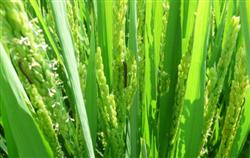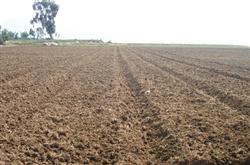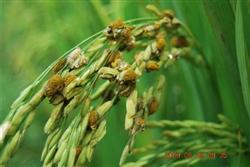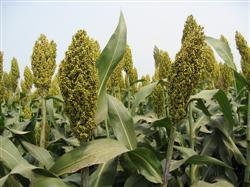glume Learn more about glume
-
What if the rice glume is opened and not filled?

What if the rice glume is opened and not filled? If there is any way to solve the problem, the phenomenon of glume opening and non-grain filling after heading occurs in many places, mainly in hybrid indica rice and basically not in japonica rice. Due to the occurrence of this phenomenon in different years, there are fields with and without drugs.
2018-07-19 -
How to choose the seeds of shearing Ying? What are the methods of raising seedlings?

The shearing glume belongs to Gramineae, which has high feeding value and garden value. The shearing glume is often used as the raw material for laying lawn, and it is often used in the construction of lawn and ground cover. This grass is also widely used in golf courses, green lanes, football pitches, bowling alleys and other venues. Scissors
2020-11-27 Shearing glume seed how selection seedling method have which -
Jinmai 62

Jinmai 62 was examined and approved by Shanxi crop Variety approval Committee in 1999. Characteristics: coleoptile purple, seedlings creeping. The leaves are dark green and the leaves are short and upwelling. The plant type is compact, the stem is stout, and the plant height is 75 cm. The spike is oblong, long awn, spike length 8 Murray 9 cm, spikelet density medium, fruiting spikelet 17 Murray 20, spike grain number 30. White shell, glume without tomentose. Protective glume ovate, oblique shoulder, glume beak type, ridge obvious. White grain, oval, hard, 1000-grain weight about 40 grams. Winter, medium maturity, tillering ability
2019-01-16 -
The difference between Reed and Reed

Reed and Reed grass are plants growing in rivers and lakes and wetlands, and their shapes are similar, so many people can't tell whether they are Reed or Reed grass. So what's the difference between Reed and Reed? 1. Morphological characteristics of Reed perennial Reed
2020-11-08 The difference between Reed and Reed grass Reed and Reed grass are all raw. -
Ii you 98 (Rice)

The applied variety IIyou 98 (formerly Kangyou 98) is an indica hybrid rice, which belongs to OryzasativaL in plant taxonomy. II you 98 was bred by crossing Taichung local No. 1 (TN1) as female parent and DV85 as male parent. The main economic characters were improved, but the intermediate resistance source TD; still carrying Xa-7 gene was crossed with TD as female parent and Minghui 63 as male parent. The selected characters were similar to Minghui 63, but had good recovery, strong combining ability and matched with II-32A.
2019-01-16 -
How to Control Rice Grain smut

Symptoms are also known as smut, rice ink smut, Wumigu and so on. Distributed in the Yangtze River Basin and the south of China, it mainly occurs from flowering to milk ripening stage of rice, only injuring grains, one or several grains per panicle or even dozens of grains per panicle, usually showing disease when rice is near maturity. The infected rice grain is dark green or yellow, with black powder in it, the abdomen is split at maturity, showing black powder, there is a black tongue protruding between the inner and outer glumes of the diseased grain, and there is often black liquid exudation, polluting the appearance of the grain. Peeling away the diseased seeds, it can be seen that some or all of the seeds turn into black powder.
2019-01-16 -
The Medicinal value of Root, Leaf, seed Testa, Pollen and starch of Annual tall herbaceous Maize

One-year-old tall herbal corn has a wide range of medicinal value. Modern pharmaceutical industry uses corn starch as the raw material of culture medium to produce penicillin, streptomycin, chloramphenicol, erythromycin, chloramphenicol and so on. Corn starch can also be used to produce glucose, antihypertensive, anesthetic and antihypertensive.
2020-11-09 Annual tall herbaceous corn root leaf seed coat pollen -
How to see whether rice seeds are sick or not?

How to see whether rice seeds are sick or not? Is there a way to identify it? Also ask the netizens who know to help guide the farming network to sort out the methods to identify whether rice seeds are sick or not, which are listed below for netizens' reference. General rice seeds such as diseased grains containing evil seedling disease become seedlings, and some are in the suture of glumes outside the grain.
2018-07-17 -
Four precautions for harvesting rice

Attention should be paid to the following four points before and after rice harvest. 1. Drainage as early as possible. Drain the paddy fields as much as possible, and dig trenches to dry the lowlands as early as possible if necessary. two。 Ripe for harvest. Manual harvesting is carried out when more than 95% of the rice glumes in the field turn yellow, the grains harden and the grains are transparent. Mechanical harvesting can be appropriately delayed by a few days. 3. Pay attention to the way. Artificial cutting and drying can increase 1000-grain weight and yield, and at the same time, rice has good marketability and high germination rate. Harvest with a harvester, the most
2019-01-16 -
Occurrence characteristics and control techniques of rice false smut

1. Occurrence characteristics of rice false smut disease only occurs in panicle, generally from flowering to milk ripening of rice. The infected grain grows in glume and forms rice false smut with a diameter of about 1 cm instead of rice grain. The optimum temperature for germination and development of Ustilaginoidea virens was 25~30℃, 34℃ or 12 ℃.
2018-09-13 -
The latest control of common diseases in rice

1. Rice blast, also known as rice fever, can be divided into seedling blast, leaf blast, ear neck blast, branch blast, grain blast and so on. Seedling plague: the base is gray-black, the upper part turns brown, curls up and dies, and a large number of gray-black mildew layers are produced in the disease part when the humidity is high.
2020-11-10 The latest rice common disease control rice blast also known as rice -
Control measures of wheat midge

Control measures of wheat midge
2018-07-01 -
The latest control measures of wheat trematodes

Wheat midge is a worldwide pest, which is widely distributed in major wheat-growing countries in Asia, Europe and America. Domestic wheat trematodes are also widely distributed in the main wheat producing areas in China. There are two main species of wheat midges in China, namely, red midge and yellow midge.
2020-11-10 The latest wheat suction insects control measures -
The latest growth characteristics of Rice and its requirements for Environment

On rice, seeds are usually germinated until new seeds are produced as a growth cycle of rice, that is, the growth period. The growth period can be divided into seedling stage, green stage, tillering stage, long panicle stage (panicle differentiation stage) and fruiting stage. Generally speaking, the seedling stage has been completed and moved in the seedling field.
2020-11-10 The latest rice growth characteristics and yes the environment requirements in -
Prevention and control of rice diseases and insect pests: how to control rice false smut?

How to prevent and cure false smut of rice? What are the hazards of rice false smut? Please introduce the harm of rice false smut: Rice false smut only occurs in the panicle, generally from flowering to milk stage, infected grains, the pathogen grows in the glume, forming rice koji with a diameter of about 1 cm instead of rice grains. ...
2018-09-08 -
Jiazao 935 (rice)

Education unit: Agricultural Science Research Institute of Jiaxing City, Zhejiang Province. Approval status: Approved by Zhejiang Province Crop Variety Approval Committee in 1999, approved by National Crop Variety Approval Committee in 2000. Variety approval number: Guoshen Rice 2000006. Source: Z9l-105///You905/Jiayu 293//Z91-43. Characteristics: Conventional early indica rice varieties, plant height 80 - 85 cm. The seedling color is light green, the seedling stage is cold-resistant, and the seedling age elasticity is large. Grain medium long, awnless, glume
2019-01-16 -
Fuyou late 3 (Rice)

[basic situation] Fuyou late 3 (Fuyi A / late 3) is a new early indica combination of late 3 restorer line selected by Hunan Hybrid Rice Research Center and Fuyi A. Fuyi A, a wild abortive male sterile line transformed from V41A//IRS24/ Tiangu B by micro-restorer gene theory and exclusion method, showed the advantages of disease resistance, high quality, high sterility, stable fertility, good glume opening habit, high outcrossing rate and good combining ability. [characteristics] participated in Fujian early Hybrid Regional trial in 1996, with an average yield of 6.8.
2019-01-16 -
Sorghum planting: how to control sorghum smut?

Loose smut often occurs in planting sorghum. How to prevent and cure sorghum smut? Please introduce the method of sorghum loose smut in the seedling stage, the symptom is not very obvious, but the plant is a little shorter, the color is slightly dark, and the heading is earlier. After heading, the rachis and branches were intact, the glume protection increased significantly, and the whole panicle grain turned into oblong fungus gall.
2018-07-17 -
Jingdao 24 (Rice)

The variety comes from the crop Institute of Beijing Academy of Agricultural and Forestry Sciences in 1999. Original code: Jing 7506, parent combination: Xingshi A / Moonlight / / C93010. It was approved by Beijing in 2002. Second, the characteristics of spring mid-rice varieties. The whole growth period of spring middle rice in Beijing Plain is from 155 days (sown in early May) to 165 days (sown in mid-April). The plant type is compact, the leaf is straight, the leaf color is light, and the tillering ability is medium. The plant height is 110 cm and the number of effective ears per mu is 19.
2019-01-16 -
Control techniques of false smut in Rice

Rice false smut is a kind of rice disease with a wide range of harm, which occurs in the main rice producing areas in the world, and the north and south rice in China are affected by it. After the occurrence of false smut, the mildew of rice will occur and the empty rate will increase, which will affect the rice quality, reduce the commodity value and affect human health.
2020-11-08 Rice rice koji disease control technology yes a kind of
